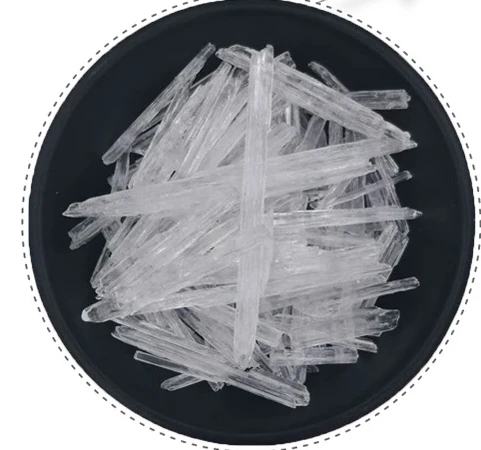Warning: Undefined array key "title" in /home/www/wwwroot/HTML/www.exportstart.com/wp-content/themes/1198/header.php on line 6
Warning: Undefined array key "file" in /home/www/wwwroot/HTML/www.exportstart.com/wp-content/themes/1198/header.php on line 7
Warning: Undefined array key "title" in /home/www/wwwroot/HTML/www.exportstart.com/wp-content/themes/1198/header.php on line 7
Warning: Undefined array key "title" in /home/www/wwwroot/HTML/www.exportstart.com/wp-content/themes/1198/header.php on line 7
- Afrikaans
- Albanian
- Amharic
- Arabic
- Armenian
- Azerbaijani
- Basque
- Belarusian
- Bengali
- Bosnian
- Bulgarian
- Catalan
- Cebuano
- China
- China (Taiwan)
- Corsican
- Croatian
- Czech
- Danish
- Dutch
- English
- Esperanto
- Estonian
- Finnish
- French
- Frisian
- Galician
- Georgian
- German
- Greek
- Gujarati
- Haitian Creole
- hausa
- hawaiian
- Hebrew
- Hindi
- Miao
- Hungarian
- Icelandic
- igbo
- Indonesian
- irish
- Italian
- Japanese
- Javanese
- Kannada
- kazakh
- Khmer
- Rwandese
- Korean
- Kurdish
- Kyrgyz
- Lao
- Latin
- Latvian
- Lithuanian
- Luxembourgish
- Macedonian
- Malgashi
- Malay
- Malayalam
- Maltese
- Maori
- Marathi
- Mongolian
- Myanmar
- Nepali
- Norwegian
- Norwegian
- Occitan
- Pashto
- Persian
- Polish
- Portuguese
- Punjabi
- Romanian
- Russian
- Samoan
- Scottish Gaelic
- Serbian
- Sesotho
- Shona
- Sindhi
- Sinhala
- Slovak
- Slovenian
- Somali
- Spanish
- Sundanese
- Swahili
- Swedish
- Tagalog
- Tajik
- Tamil
- Tatar
- Telugu
- Thai
- Turkish
- Turkmen
- Ukrainian
- Urdu
- Uighur
- Uzbek
- Vietnamese
- Welsh
- Bantu
- Yiddish
- Yoruba
- Zulu
Dec . 01, 2024 19:00 Back to list
Understanding the Uses and Benefits of Monopropylene Glycol in Various Industries
Understanding Monopropylene Glycol Versatile Applications and Safety Considerations
Monopropylene glycol, commonly referred to as propylene glycol, is a synthetic organic compound with the chemical formula C3H8O2. This colorless, odorless liquid is hygroscopic, which means it can attract and retain moisture, making it an essential ingredient in various industrial and consumer applications. Its unique properties have led to its widespread use in several sectors, including food, pharmaceuticals, cosmetics, and industrial processes.
Chemical Properties and Production
Propylene glycol is produced through the hydration of propylene oxide, a compound derived from petroleum. This compound exhibits low toxicity, high solubility in water and many organic solvents, and a relatively high boiling point. These characteristics make it suitable for various applications it acts as a solvent, humectant, or emulsifier in products ranging from foodstuffs to personal care items.
Applications in Food and Pharmaceuticals
In the food industry, monopropylene glycol serves as a food additive (E1520) recognized for its safety by regulatory bodies like the U.S. Food and Drug Administration (FDA) and the European Food Safety Authority (EFSA). It functions primarily as a humectant, helping to retain moisture in food products, which can enhance texture and shelf life. Additionally, it is used as a solvent for flavorings and colorings, ensuring even distribution in food products.
In pharmaceutical formulations, monopropylene glycol operates as a solvent for active ingredients, particularly in injectable drugs and oral medications. Its ability to dissolve various compounds makes it invaluable in the creation of effective drug formulations. Moreover, due to its low level of toxicity, it is favored in products designed for sensitive populations, such as children or those with compromised health.
Cosmetic and Personal Care Products
The cosmetic industry extensively incorporates monopropylene glycol in skincare, haircare, and personal hygiene products. It acts as a humectant, helping to retain moisture in creams and lotions, which aids in preventing dry skin. Additionally, its antimicrobial properties can inhibit the growth of bacteria and fungi, contributing to the stability and safety of cosmetic formulations.
monopropylene glycol

Professional hair products also utilize monopropylene glycol to improve the texture and feel of shampoos and conditioners. The compound helps to dissolve various ingredients, ensuring they integrate well into the product while enhancing the product's overall performance.
Industrial Uses
Monopropylene glycol has valuable industrial applications beyond food and cosmetics. It is frequently employed as an anti-freeze and coolant in various automotive and industrial systems due to its low freezing point and high boiling point. This property makes it an effective solution for maintaining operational efficiency in machinery and vehicles in colder climates.
Furthermore, it is utilized in the manufacture of plastics, resins, and other synthetic materials. Its role as a solvent or carrier aids in the production process, enhancing the characteristics of the final product.
Safety and Environmental Considerations
While monopropylene glycol is generally recognized as safe for use in food and personal care products, it is essential to consider proper handling and exposure limits, especially in industrial settings. Inhaling high concentrations of vapors or exposure to the skin in large quantities may cause irritation.
Moreover, prudent environmental practices are necessary to ensure that monopropylene glycol does not contaminate water supplies. As it is biodegradable, its impact on the environment is relatively low when managed appropriately. However, manufacturers and users should adhere to regulations and best practices to mitigate any ecological risks.
Conclusion
Monopropylene glycol is a remarkably versatile compound that plays a critical role in various industries. Its applications extend from food and pharmaceuticals to cosmetics and industrial processes, highlighting its importance in daily life. Understanding its properties, uses, and safety considerations is essential for both consumers and producers alike. As industries continue to innovate, the demand for this compound is likely to grow, making it an indispensable player in the realm of chemistry and manufacturing.
Latest news
-
Certifications for Vegetarian and Xanthan Gum Vegetarian
NewsJun.17,2025
-
Sustainability Trends Reshaping the SLES N70 Market
NewsJun.17,2025
-
Propylene Glycol Use in Vaccines: Balancing Function and Perception
NewsJun.17,2025
-
Petroleum Jelly in Skincare: Balancing Benefits and Backlash
NewsJun.17,2025
-
Energy Price Volatility and Ripple Effect on Caprolactam Markets
NewsJun.17,2025
-
Spectroscopic Techniques for Adipic Acid Molecular Weight
NewsJun.17,2025

